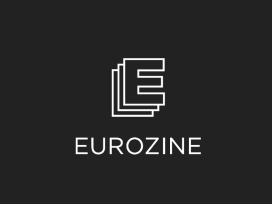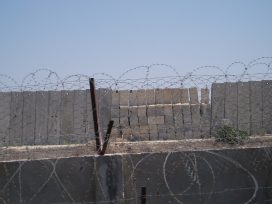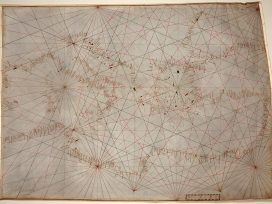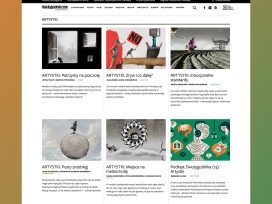‘Why, if they know they could die at sea, are they still coming?’ That’s the question being asked by many Europeans about the continuing flood of migrants trying to cross from Africa to Italy, Greece and other parts of Europe in crowded, often unseaworthy boats, many dying in the attempt.
I wanted to show what is happening on the other side of the Mediterranean, in Libya.
Working in Libya is difficult and dangerous, even with a good knowledge of the country and good connections. We didn’t know what to expect.
What we discovered were hundreds of people being held in camps, waiting, hoping for a better life. Some were so thin that bones were sticking out of their backs. One woman told us: “What will happen next, we don’t know.”
Migrants are keen to speak to the camera, desperately trying to call for help, to say: “We are here and we are human beings, we exist.” In some way they believe that if only the world outside could know, something would happen to change things. They cannot believe they are just left to their fate.
These desperate refugees who have fled from terror in their own country (Sudan, Eritrea and Somalia) are housed in huge hangars. They are forced to live there, often with little water or food, and at risk of being beaten. Living in a halfway zone between home and the freedom they seek, they have no knowledge of whether they will ever leave Libya.
As part of the research for the story I needed access to government-manned centres, and authorisation from the ministry of interior. This often requires clearances signed by the police or other bodies, and includes days spent in waiting rooms and multiple telephone calls to different offices. Sometimes even that preparation was not enough, for instance on one occasion visiting the officially government-controlled Abu Slim centre, despite the visit being arranged by the ministry and an officer accompanying me, the militiamen, who weren’t consulted beforehand, blocked our visit. As we crossed the gate a number of young guys wearing flip flops and carrying pistols threatened the director and the officers.
Of course, as there is no press freedom in Libya, we just scrape the surface and try to get as deep as possible, bearing in mind that what we can see is never the whole reality.
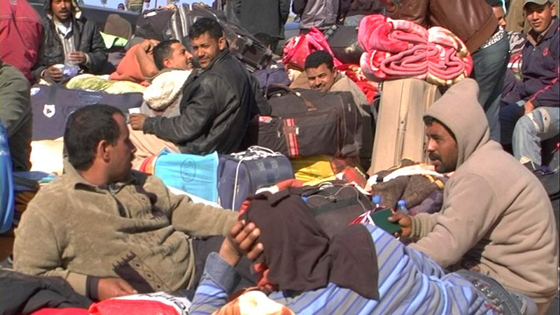
Thousands of Libyan refugees remained stranded at the Ras Jedir border crossing, 5 March 2011. Photo: Magharebia. Source: Wikimedia
During my work, all the militias I met were keen to show how good they were at controlling the migrants and, astonishingly, they were not worried at all about hiding every kind of abuse they were perpetrating. In some way they seemed to believe that in Europe nobody cares about that, as long as they can prevent migrants arriving on our shores. In some cases the only reason I was allowed to work in one camp was because the militia thought that visibility of the media could have been useful to put pressure on the government.
The most scary thing is that what we were seeing and documenting was just the good part: what is shown is considered acceptable or even something to be proud of. Despite this, the living conditions I saw were really harsh and abuses are part of normal life. What happens out of sight may be even more terrible.
European public opinion was shaken when on 18 April 2015 more than 800 men, women and children drowned in the Mediterranean. Following this, the European Union expressed a willingness to bomb boats and ports used to smuggle migrants across the sea. The Tripoli government, supported by Islamist coalition Libya Dawn, declared its intention to engage in the struggle against human trafficking, and started a campaign aiming to show it was serious about stemming the flow of migrants. The Libyan government is also receiving support from the EU to help control Mediterranean crossings.
Migrants have become a valuable commodity in the fight for power, as Libyan militias, who are widely believed to have a major role in the human trafficking business, stepped into migration policy to try and gain influence on the government.
Government officials told me they did not have enough resources to carry out any of the operations the government had announced so they had hired rough militias “to secure the shores and stop illegal crossing to Europe.”
The migrant stories are gruesome, they cannot speak freely and what we can hear from them is not the whole reality. The migrants I met with again when some of them managed to reach Europe told me about torture and killings as a day-to-day routine.
I thought it was important to cover this story to show what happens out of the sight of European people. While the public were demanding a bigger effort to save the lives of migrants in the Mediterranean sea, the actions undertaken by the Tripoli government to show itself as a reliable partner for the EU in the control of the migration flow were in effect worsening living conditions and increasing the danger for migrants in Libya.
